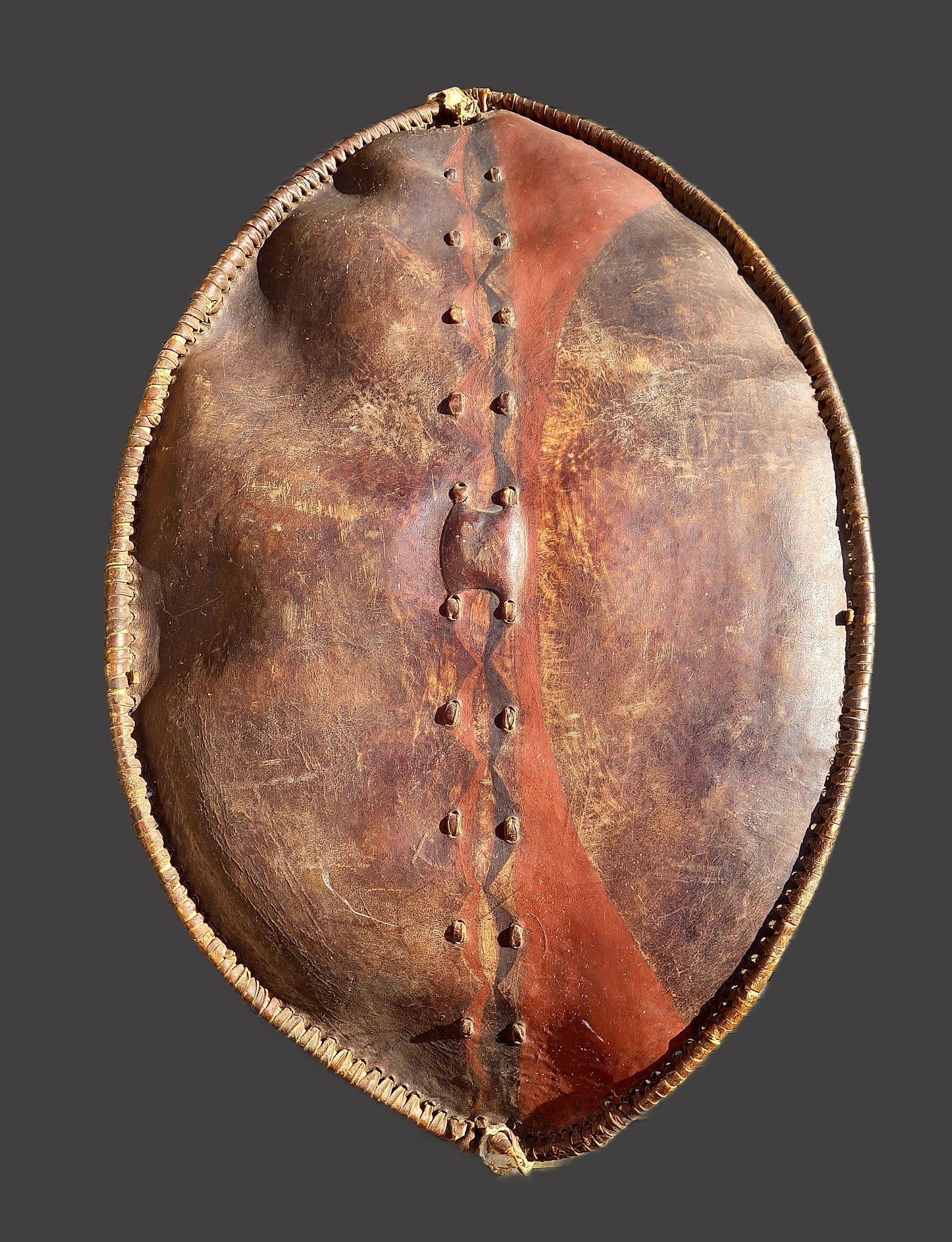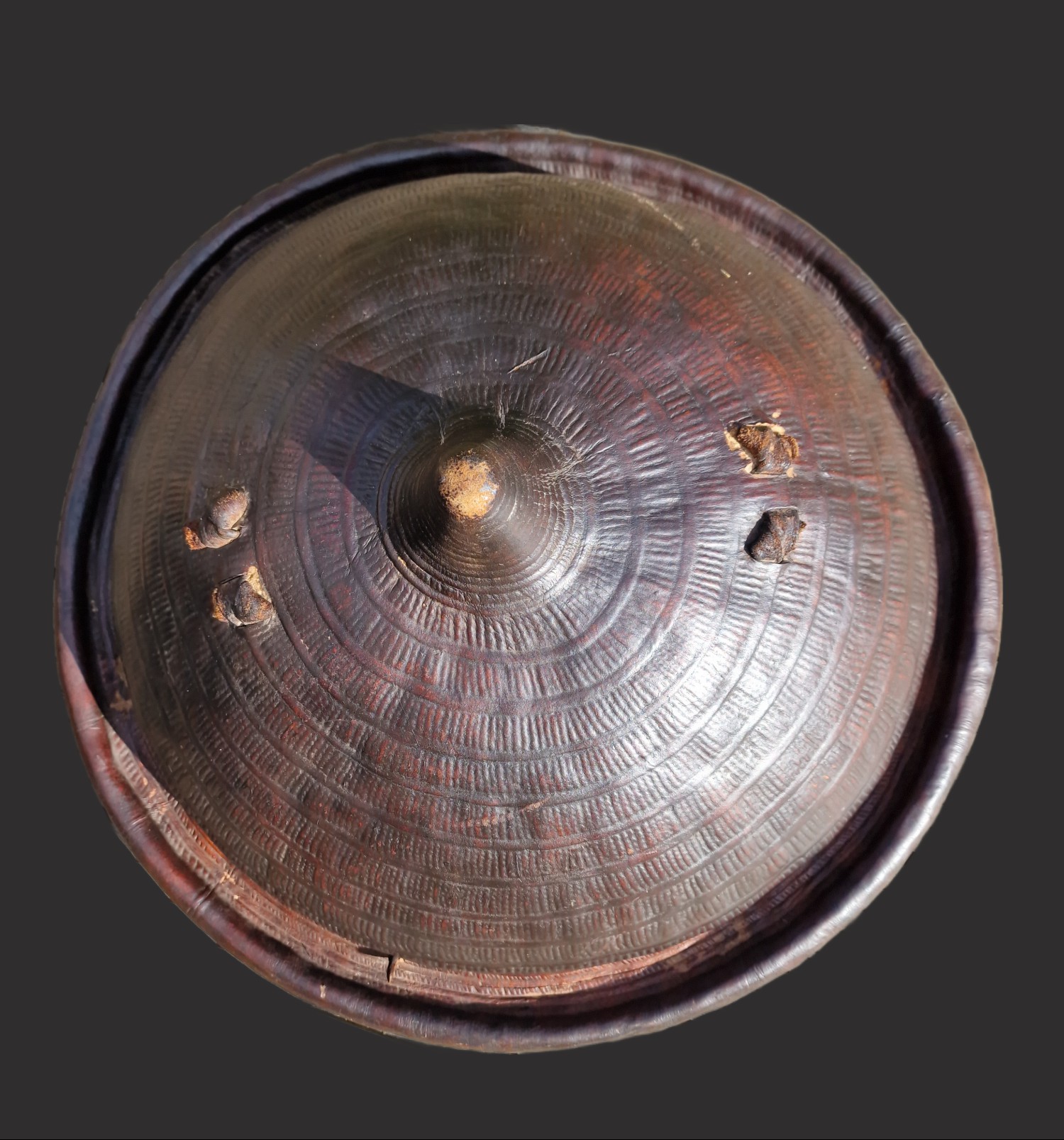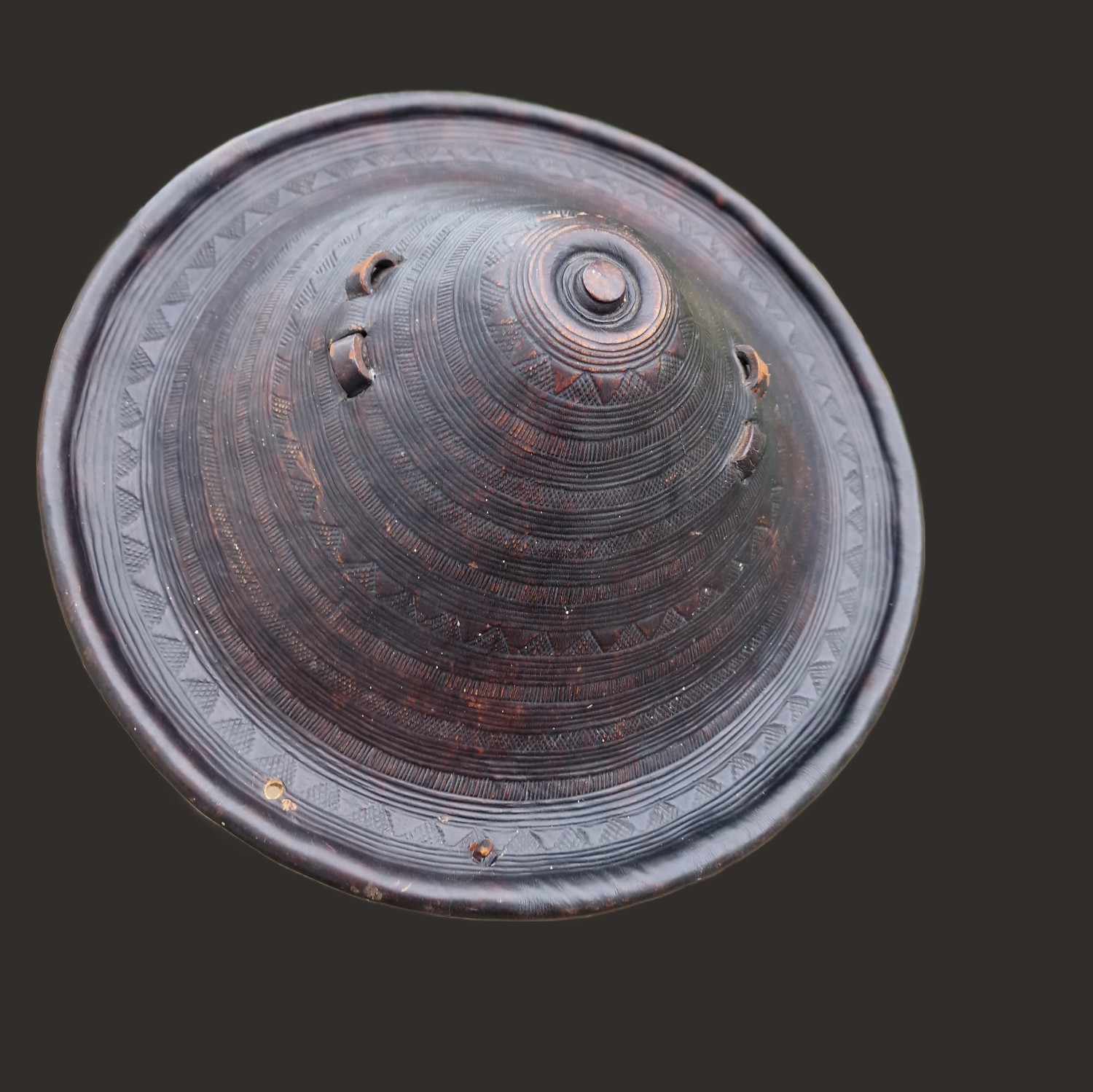Weapons
Discover ceremonial and traditional weapons representing various African cultures.

Maasai Shield, Kenya.
An exceptional Maasai warrior shield, oval-shaped and crafted from buffalo hide stretched over a wooden frame, adorned with natural dyes. Its abstract patterns enhance its abstract striking appearance, symbolizing bravery and status. The Maasai warrior shield served as both a defensive weapon and a symbol of status. It was used for protection in combat and against wild animals, especially lions. The shield’s sirata designs signified a warrior’s rank . It played a crucial role in initiation ceremonies, marking the transition to warriorhood. Beyond its practical use, it was a prestige object representing honour and lineage. A true warrior’s shield, dating back to the early 20th century. Measurements are H 110 cm x W 66cm.

Beja Shield, Sudan.
This fine Beja shield from Sudan is round with a slightly convex shape and a central boss for deflecting blows. Crafted from animal hide, it has a rich patina that reflects its historical use and age. Traditionally used by nomadic Beja warriors, it served as both protection in combat and a symbol of status and heritage. Signs of wear and tear are consistent with its usage. Dating back to the early 20th century, it measures 57 cm in diameter.

Amhara Shield, Ethiopia.
This exceptional Amhara tribe shield from Ethiopia is a finely crafted, circular piece made from hide. It showcases a raised central boss and intricate concentric patterns on its dark brown surface. Signs of wear indicate its age and usage. Shields like this represented protection, status, and nobility, often marking a warrior's rank or passage into adulthood. Dating back to the early 20th century, it measures 54 cm in diameter.

Turkana Shield, Kenya.
This Turkana shield from Kenya is crafted from animal hide. It has an elongated, rectangular shape with a central ridge and slightly curved edges. It has a rich dark patina, a testament to its usage and age. Traditionally Turkana warriors used it for protection in combat and as a symbol of status and identity. Dating back to the early 20th century, it measures H 113 cm x W 35 cm.

Amhara shield, Ethiopia.
This Amhara circular shield, crafted from animal hide, features intricate geometric patterns, including concentric designs that enhance its aesthetic appeal. A central boss provides added protection in combat, while a thick rim prevents weapons from sliding off. Leather bindings reinforce the structure, ensuring durability.Historically, it was a symbol of status and nobility, carried by warriors and chieftains. The Amhara region, encompassing Bégemder, Godjam, and part of Wollo, is home to the Amhara people, who speak Amharic, Ethiopia’s official language. The shield was traditionally used by the Kaffa of the Sidamo group for defense. It has some wear and tear consistent with age and usage. Dating back to the early 20th century, it measures 54 cm in diameter.
